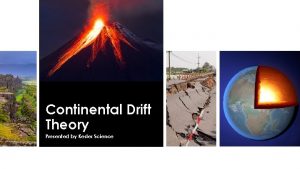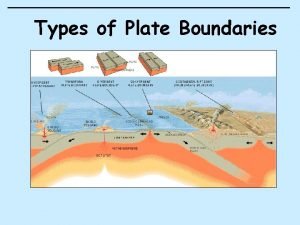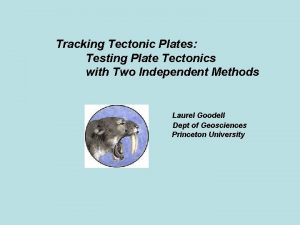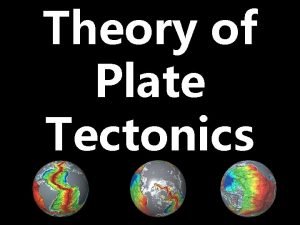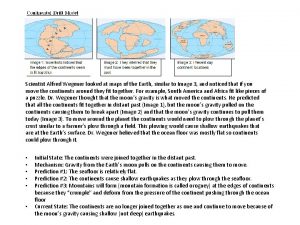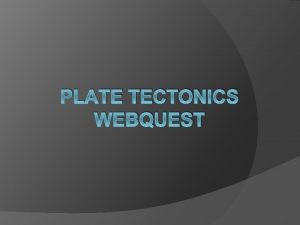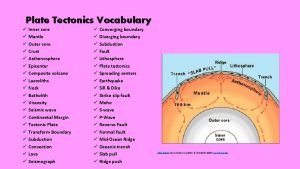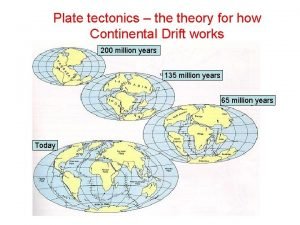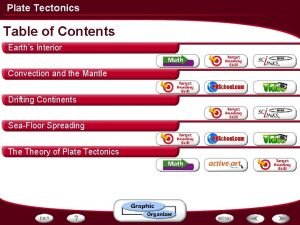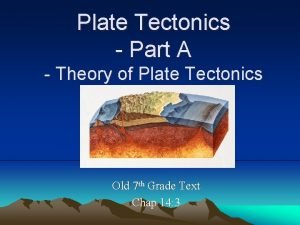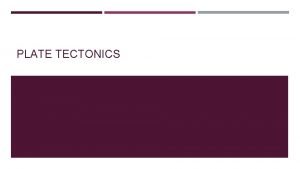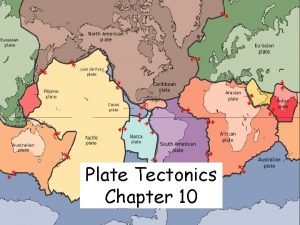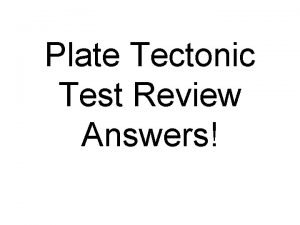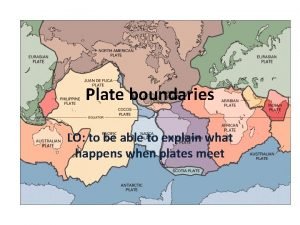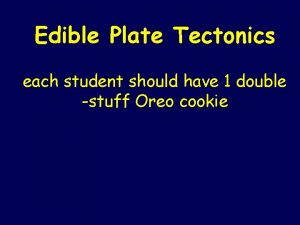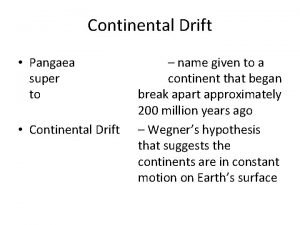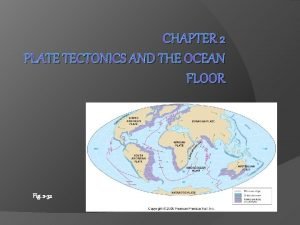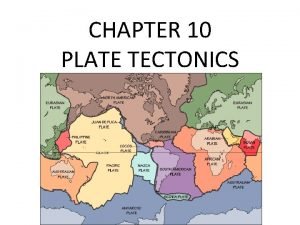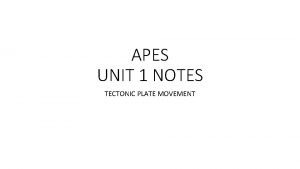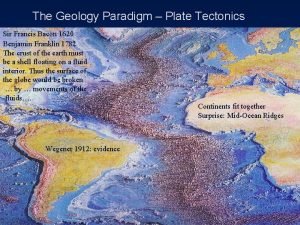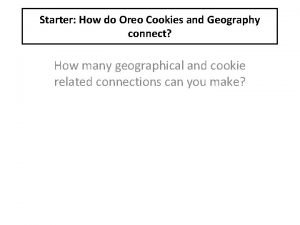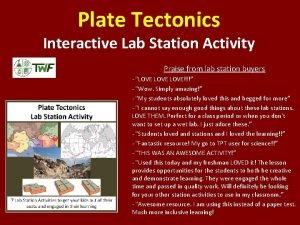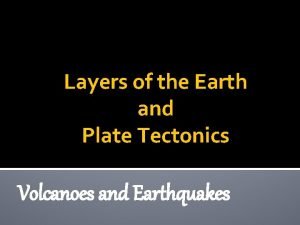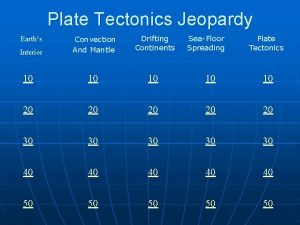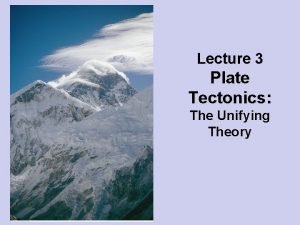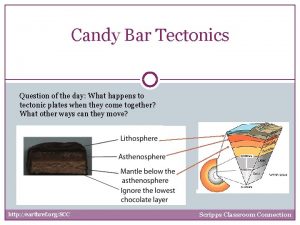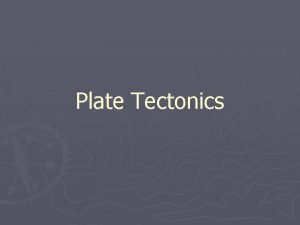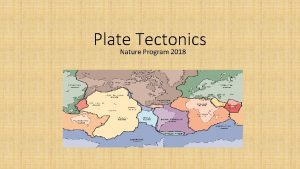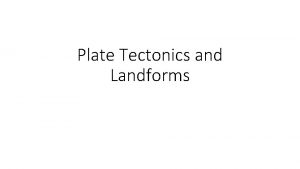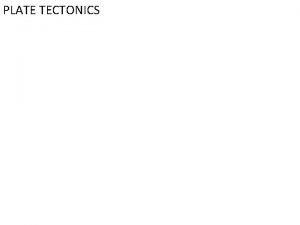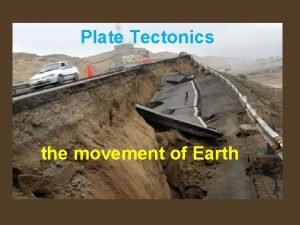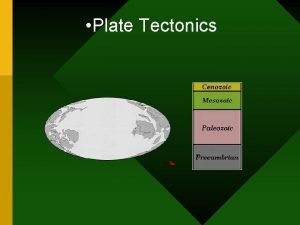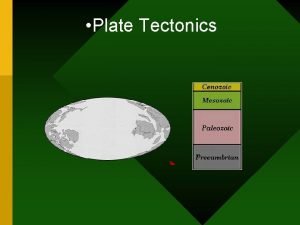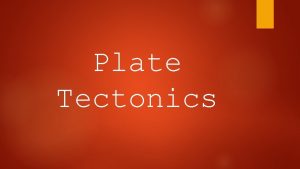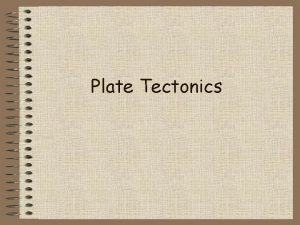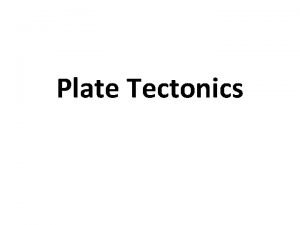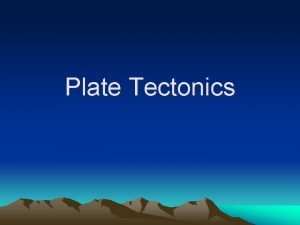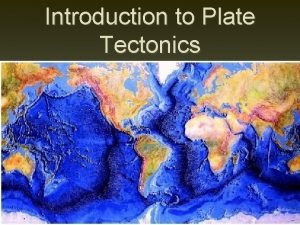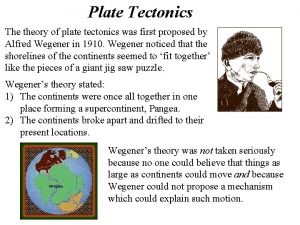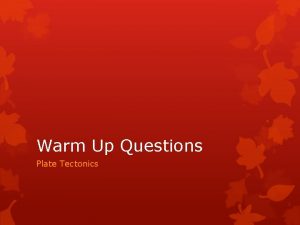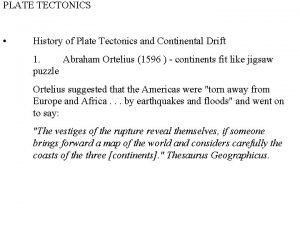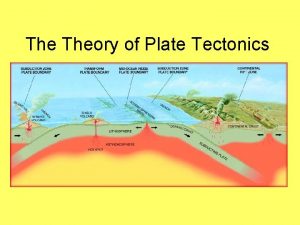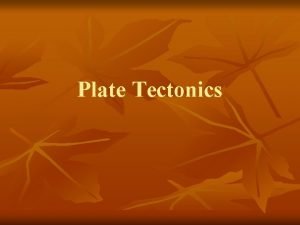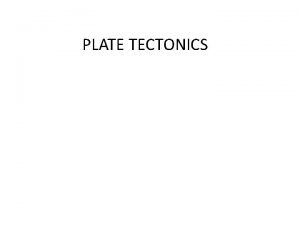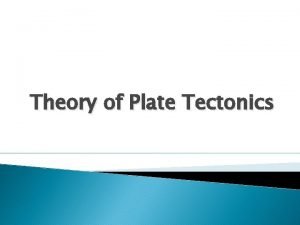Plate Tectonics Earth Science 1 What is Plate
































- Slides: 32

Plate Tectonics Earth Science 1

What is Plate Tectonics? l Modern theory used to explain how Earth’s physical features (geology and geography) have formed. 2

Layers of the Earth 3

Layers of the Earth l l Lithosphere: crust and upper part of mantle Asthenosphere: mantle beneath lithosphere 4

Layers of the Earth l l Crust: Thin rock layer; forms oceanic and continental plates Mantle: Molten rock layer; flows slowly and smoothly 5

Layers of the Earth l Earth’s lithosphere is made of several plates that move because of convection currents in the asthenosphere. 6

Earth’s Plates 7

History of Plate Tectonics l In 1915, German geologist Dr. Alfred Wegener proposed an idea called the Theory of Continental Drift. 8

History of Plate Tectonics l He believed all continents were joined together about 250 million years ago as a megacontinent Pangaea (“all land”). 9

History of Plate Tectonics l He also believed all of Earth’s water was one large ocean called Panthalassa (“all sea”). 10

History of Plate Tectonics l Most of Wegener’s ideas were rejected because he could not explain why Pangaea split apart. 11

History of Plate Tectonics l New evidence to support Wegener’s idea was discovered in the 1960 s, leading to the development of the modern Theory of Plate Tectonics. 12

Supporting Evidence l Continental Shelf Fit l Continents appear to fit together like puzzle pieces 13

Supporting Evidence l l Paleoclimate Glacier patterns indicate Pangaea existed near the South 14

Supporting Evidence l Fossils l Similar fossils are found in both South America and Africa. 15

Supporting Evidence l Rocks l Mountain ranges appear to extend across continents. 16

Supporting Evidence l l l Climate Change Salts and coal – form in warm climate can be found up north (Michigan was once near the equator) Coral deposits, limestone – found in Grand Canyon and Canada – these were once in warm climates 17

Supporting Evidence l Paleomagnetism l Magnetic patterns in rocks indicate continental shift. 18

Supporting Evidence l l Seafloor Spreading Ocean crust is younger than continental crust. 19

Supporting Evidence l Earthquake Patterns l Most earthquakes occur along plate boundaries. 20

Supporting Evidence l l Volcanic Hot Spots Rising plumes of mantle create volcanic chains that mark plate movement. 21

Plate Boundary Interactions l Divergent Boundary: Plates move apart as magma rises to surface Forms ridges, rises, and rifts 22

Plate Boundary Interactions 23

Plate Boundary Interactions l Convergent Boundary: (3) Plates collide creating subduction zones (areas where crust is forced into the asthenosphere and melted) 24

Plate Boundary Interactions l Ocean-Continent Convergence: l Subduction of ocean crust l Forms volcanic mountains 25

Plate Boundary Interactions 26

Plate Boundary Interactions l Ocean-Ocean Convergence: l Subduction of oceanic crust l Forms island arcs and trenches 27

Ocean – ocean convergence 28

Plate Boundary Interactions l Continental Convergence: l Form mountain ranges 29

Plate Boundary Interactions l Transform Fault Systems: l Plates slide past each other creating fault zones l Causes earthquakes 30

Plate Boundary Interactions 31

Why does NE quake? l l l Intraplate earthquakes "ancient zones of weakness" are being reactivated in the present-day stress field. https: //www 2. bc. edu/~ kafka/Why_Quakes/w hy_quakes. html 32
 Continental drift theory
Continental drift theory Plate tectonics vs continental drift
Plate tectonics vs continental drift Marianas trench plate boundary
Marianas trench plate boundary Plate motion calculator
Plate motion calculator Plate tectonics theory states that
Plate tectonics theory states that Convergent boundary divergent boundary transform boundary
Convergent boundary divergent boundary transform boundary Compare continental drift and plate tectonics
Compare continental drift and plate tectonics Continental drift webquest
Continental drift webquest Inner core vocabulary
Inner core vocabulary Continetial drift
Continetial drift Mantle convection and plate tectonics
Mantle convection and plate tectonics Plate tectonics definition
Plate tectonics definition Driving force of plate tectonics
Driving force of plate tectonics What is this process called
What is this process called Summarize the theory of plate tectonics
Summarize the theory of plate tectonics Arthur holmes contribution to plate tectonics
Arthur holmes contribution to plate tectonics Continental drift vs plate tectonics
Continental drift vs plate tectonics Mantle magma
Mantle magma Collision plate margin diagram
Collision plate margin diagram Divergent boundary oreo
Divergent boundary oreo Pangaea
Pangaea From now
From now Chapter 10 plate tectonics
Chapter 10 plate tectonics Apes frq plate tectonics
Apes frq plate tectonics Francis bacon plate tectonics
Francis bacon plate tectonics Oreo cookies plate tectonics
Oreo cookies plate tectonics Plate tectonics interactive lab
Plate tectonics interactive lab Transform boundary oreo
Transform boundary oreo Oreo plate tectonics
Oreo plate tectonics Lithosphere definition
Lithosphere definition Plate tectonics game board
Plate tectonics game board Types of plate boundaries
Types of plate boundaries Candy bar tectonics
Candy bar tectonics
